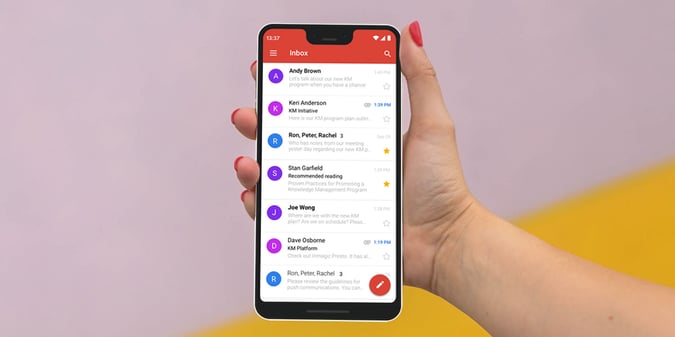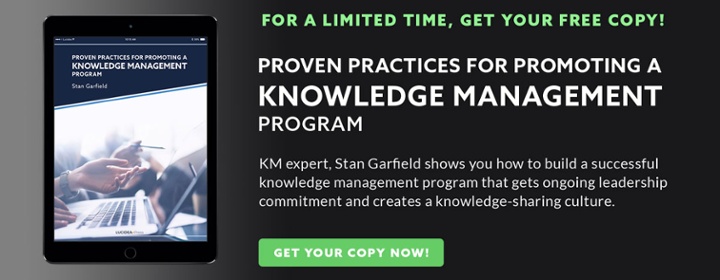
Timely communication is critical to successfully introduce and promote KM initiatives and keep the organization informed of progress. Develop a plan for the communications vehicles you will use and be sure to include “push” channels.
Push communications are sent proactively to multiple recipients; the sender controls who receives the communication, how they receive it, and when. Push channels are used to broadly share important or time-sensitive information, and include email blasts, RSS, SMS and voicemails.
Take extra care in using push communications such as newsletters to promote KM initiatives. You don’t want to annoy users by sending them information they don’t want.
Here are 10 guidelines to follow:
- Allow opting in and out; use services that allow people to subscribe and unsubscribe easily
- Send a one-time invitation to subscribe to a wide audience, and then respect the decisions of the recipients; provide multiple alternatives, including email, RSS feed, and reading online only
- Don’t subscribe anyone who didn’t request it; this is a serious violation of the opt-in principle
- Don’t send messages to people unless they want to receive them; otherwise, you will be viewed as a spammer
- Make subscribe or unsubscribe options obvious in all messages; verify the links really work
- Store an archived copy of each newsletter; in each issue, include a link to the archives. Many newsletter services include this archive feature. Readers may choose to read through the archives to learn more about your KM initiative
- Don’t blanket all threaded discussions with the same message; if a message is relevant to more than one threaded discussion, craft a brief, customized version specific to each forum, explain why it is relevant, and include a link to the full message which is posted elsewhere
- Keep your newsletters as short as possible; one page is preferred; if the newsletter contains multiple topic categories, include only one story per category. If stories are longer than one to two paragraphs and you want to keep your newsletter short, you can include just the first paragraph with a “Read More” link that directs readers to the full story on your website
- Avoid sending messages with attachments; instead, post necessary files to an easily-accessible site and include links
- Include your name in each communication so people know whom to contact with feedback and suggestions; this will help build a positive reputation for you, especially if you follow the other nine guidelines
Lucidea Press has published my latest book, Proven Practices for Promoting a Knowledge Management Program, which offers advice and insights drawn from my career as a KM practitioner, including more tips on how best to communicate with your user base.



